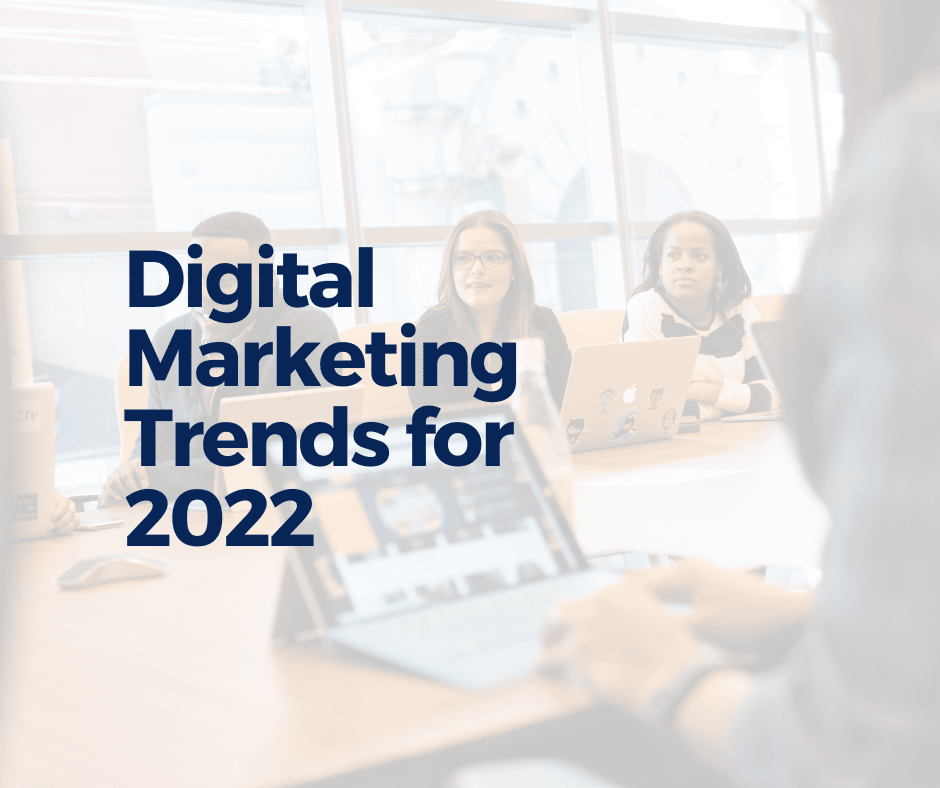Digital Marketing Trends for 2022
It often seems as if, with every year that passes, more and more challenges are thrown in the marketer’s path. And while that’s not untrue, it doesn’t mean marketers can’t prepare for further turbulence.
Keeping your finger on the pulse is crucial to keeping up with, and ideally overlapping, your competition. So, now that we’re well into 2022, let’s take a look at the most prominent digital marketing trends of the year so far, and the year ahead.
Conversational Communication Styles
While AI chatbots can be effective in very specific scenarios, conversational marketing only really works when it’s coming from a human. This is especially true for B2B marketing.
And conversational marketing doesn’t have to be an outright conversation. You should be utilising a friendly tone at every stage of the user experience; from onboarding, to nurture campaigns.
It’s not just your choice of words that establishes the tone. A good marketer knows that there’s more to communication than the words being said. The use of emojis, pictures, and other multimedia elements can all have an impact on conversions.
Marketing Via Podcasts
The podcasting boom has been underway for years. There’s a reason why it feels like almost every celebrity has started a podcast recently, and it’s because they’ve realised how much easy money is to be made from selling ads.
Podcasts have increasingly become a viable option for marketers, proving a win-win for both parties. And if it feels like the right platform for your target audience, it’s now easier than ever to take advantage of this channel.
While the old fashioned email never goes amiss, there are now platforms dedicated exclusively to the buying and selling of advertisements. Podcast network Headgum recently launched Gumball, an entirely self-service marketplace that allows marketers and podcasters to buy and sell ads, which would then be read by the host(s) on the podcast.
Marketing via podcasts no longer requires multiple emails back-and-forth. Platforms like Gumball make for a far more streamlined process.
Businesses might be reluctant to trust a third party with promoting their products, but listeners of a podcast are far more likely not to skip an ad if it’s voiced by the voices they’re acquainted with. The hosts of comedy podcasts, for example, can provide their own comedic spin on an ad read, if allowed a little liberty by the marketer.
One of the aforementioned Headgum network’s original shows, Review Revue, was so renowned for its take on the traditional ad reads that, due to popular demand, they posted all of their past ads on their Patreon. An unmistakable example of the power of podcast marketing, then; rather than paying money to hear the show without ads, fans were paying money to hear the ads exclusively. True, that money isn’t going into the pockets of the marketer, but it may very well lead to further conversions, prompted by perpetual brand awareness.
Metaverse and Virtual Reality/Augmented Reality
While the metaverse itself still leaves much to be desired (and Meta’s own attempts have thus far seemed strikingly similar to applications that already existed), virtual reality tech is becoming increasingly accessible. Corporate America has wasted no time in drawing up strategies to take full advantage of this emerging virtual landscape, with Nike, Gucci, and Meta leading the charge.
Many are sceptical of the impact virtual reality will actually have as a marketing tool. But you only need to look at the rise of augmented reality, technology which is now available on most modern phones, to imagine the range of marketing possibilities that virtual reality could provide. Will it really be the ‘future of the internet’? Time will tell. But it’s worth keeping an eye on in 2022.
Privacy
It’s more vital than ever that the customers and business you’re interacting with feel that they can trust you. But it takes time to build that trust.
Protecting their privacy is a crucial part of the customer’s online experience, and while companies must respect that, customer data is required in order to provide them with relevant information and ads.
It’s all about finding the balance between getting a more accurate picture of your audience, while still preserving the privacy of that audience. The first step is being honest and open with when, and why, customer data is collected.
Transforming Your Marketing Strategy
As the world of marketing becomes more and more complex, it’s often essential for businesses to undergo a strategic marketing transformation, a term whose definition is exactly how it sounds.
If your business doesn’t have a marketing strategy, or if your strategy is barebones, then you may need to consider fundamental changes to the processes and procedures of your business. Transforming your marketing strategy can have a number of benefits: improved customer experience, increased brand awareness, and more revenue.
Often it’s just a case of taking a step back and reevaluating the goals of your business.
SEO and Organic Content
Google’s search engine, along with other search engines, have long been one of the simplest ways to get eyes on your business’s content. But the largely unwritten rules of SEO are constantly evolving, and with more and more adverts taking the tops spots of Google’s SERP, businesses must adapt their content accordingly.
The key, as it has always been, is focused on keywords or key phrases. But there should also be more of a focus on answering specific questions. More and more customers are Googling direct questions, so the more answer-based content that features on your site, the more clicks you’re going to receive.
Video Marketing
A recent survey showed that most marketers (60% of those surveyed) are utilising video content and that it leads to far more conversions than static images. Whether it’s adverts, videos posted to social media channels, or live streams, all forms of video content are proven to generate engagements.
Many businesses shy away from making video content, assuming that if they don’t have a dedicated video editor, the process would be too time-consuming. But in 2022 there are a plethora of simple, intuitive tools that make editing videos a quick and easy process. Apple iMovie, Animaker, Corel VideoStudio- there are a variety of choices, many of which are completely free to use.
Constantly brands are exploding on TikTok simply by capitalising on one of the many latest trends. Often all it takes is an ounce of self-awareness (although it’s important to acknowledge that there’s a fine line between self-awareness and outright cringe).
Marketers agree that the most effective video content features music, voiceovers, captions, or a combination of all three. It’s also easier than ever to create branded graphics, with free and easy to use tools like Canva.
Conclusion
The digital marketing landscape has never been more volatile, and it’s unlikely to settle down any time soon. In 2022, the only way to break through that volatility and actually have an impact is by focusing on human connections, being honest and authentic, and creating content that consumers can’t possibly ignore.
To know more about B2B data and databases along with our products and services, contact us today on 0333 344 3470, email: info@theleadgenerationcompany.co.uk



















